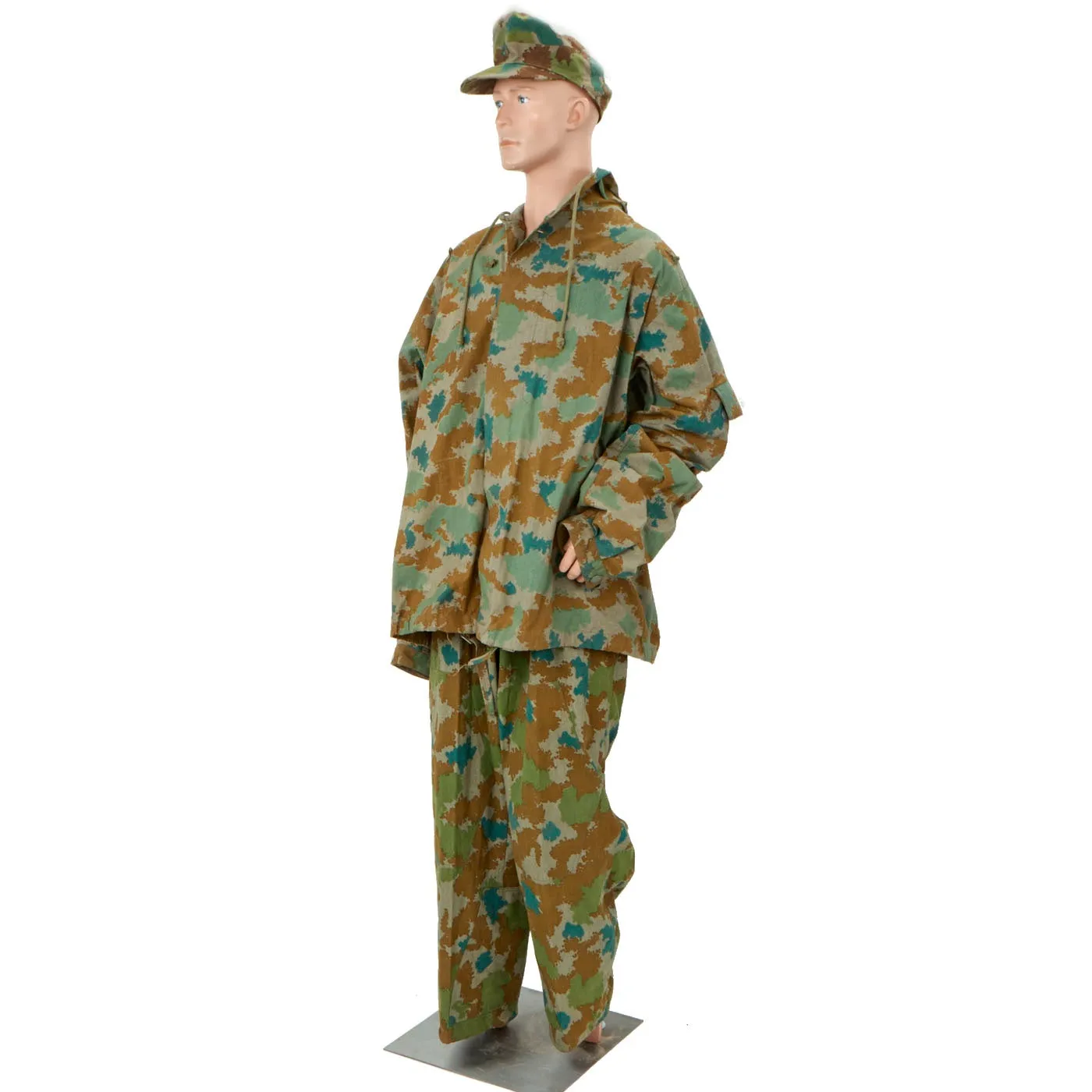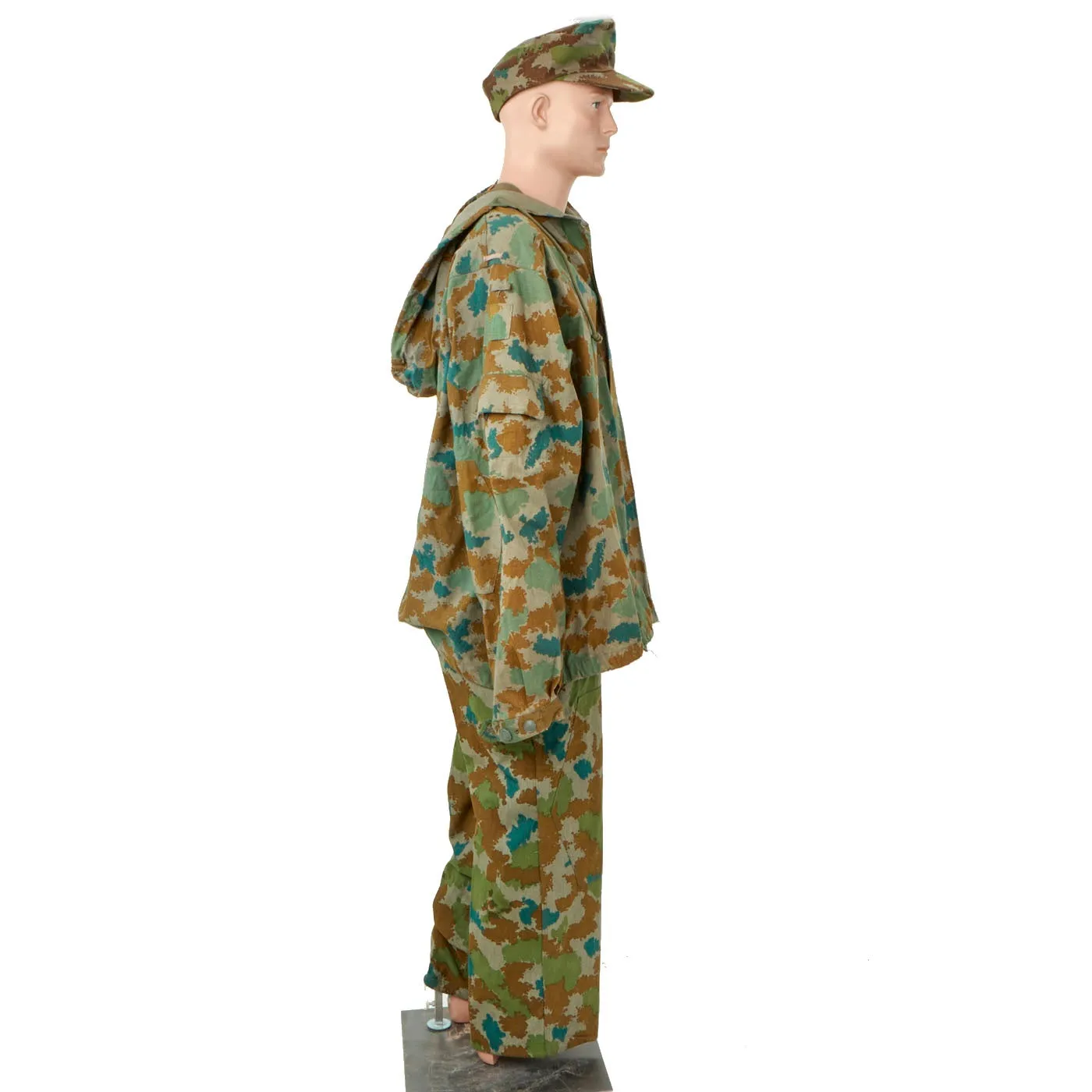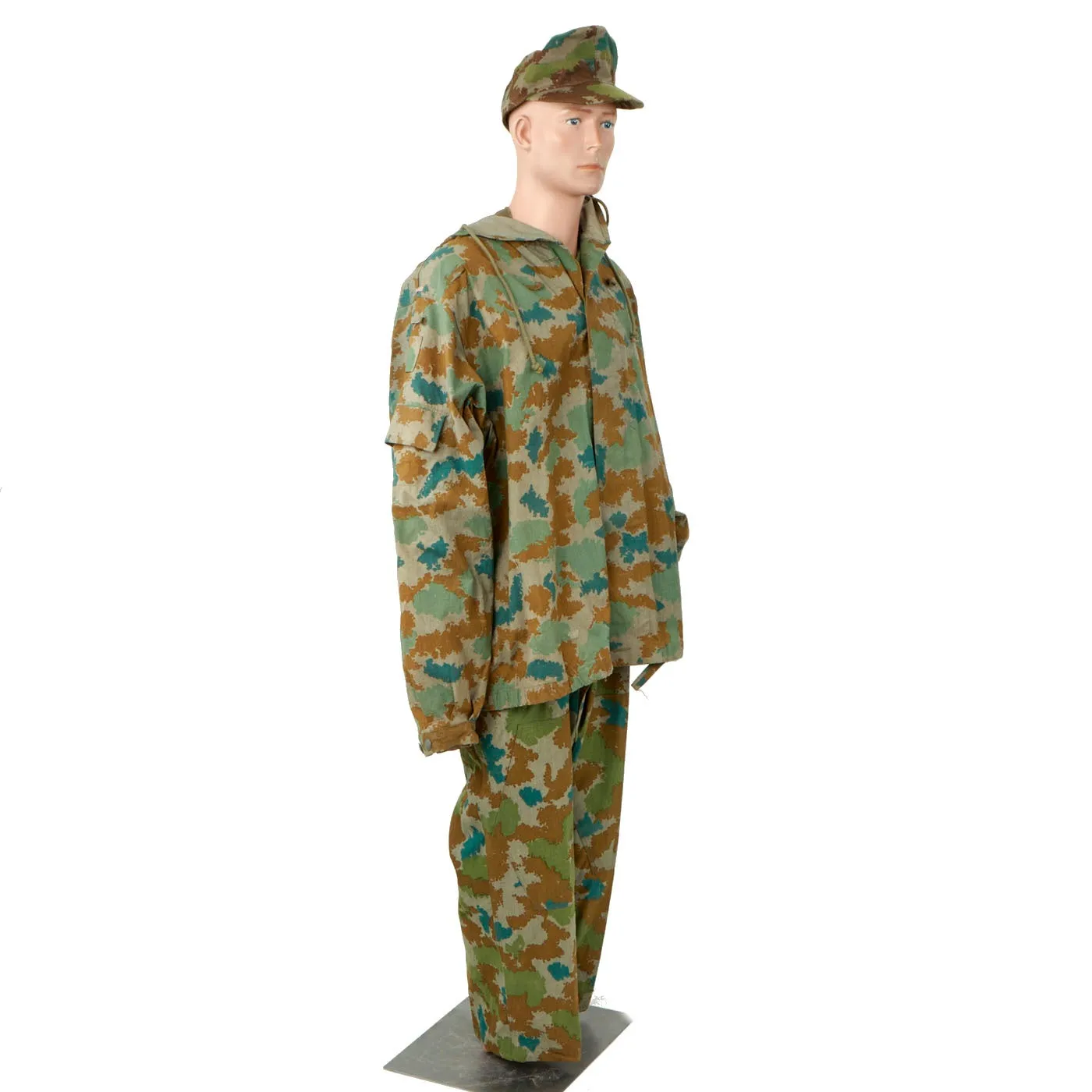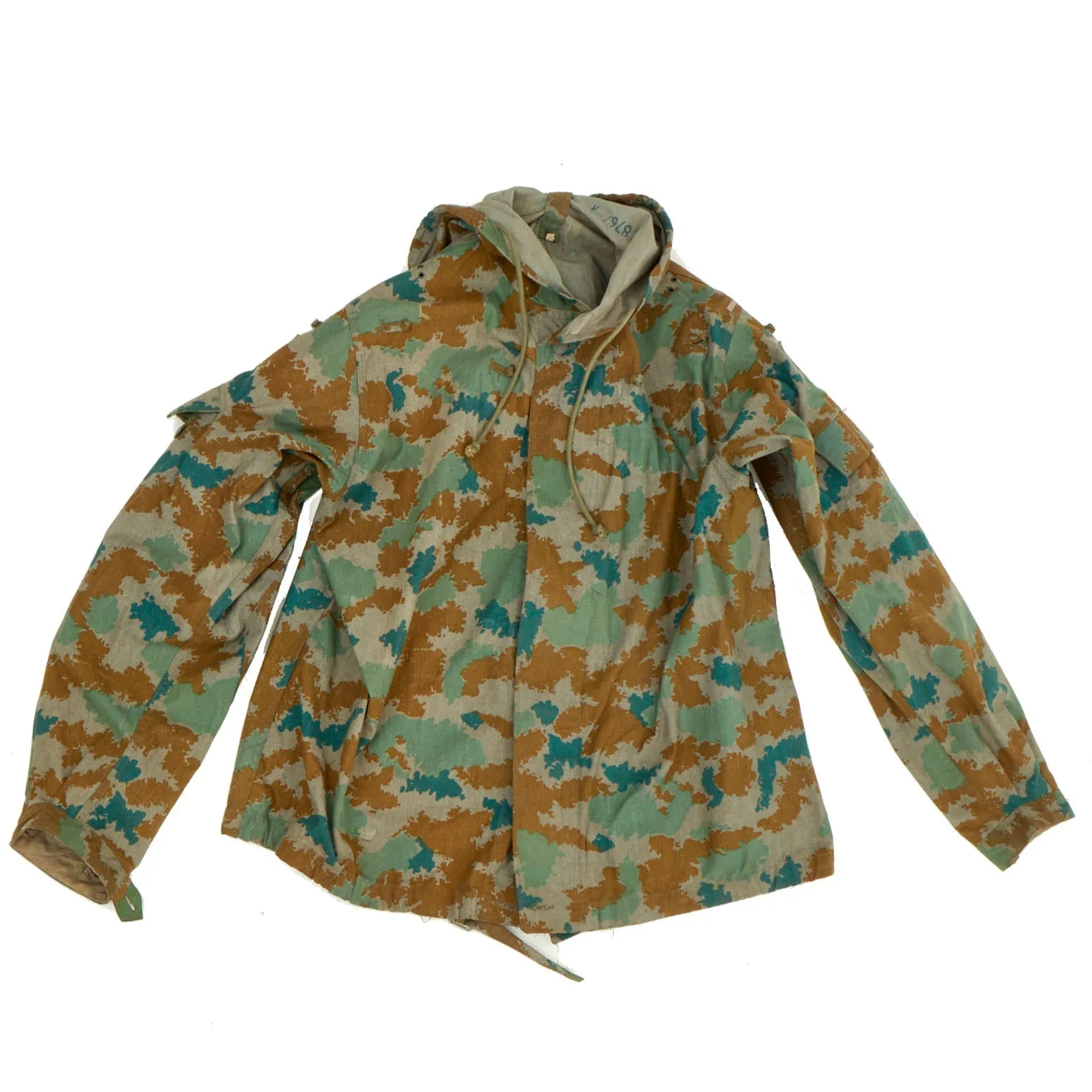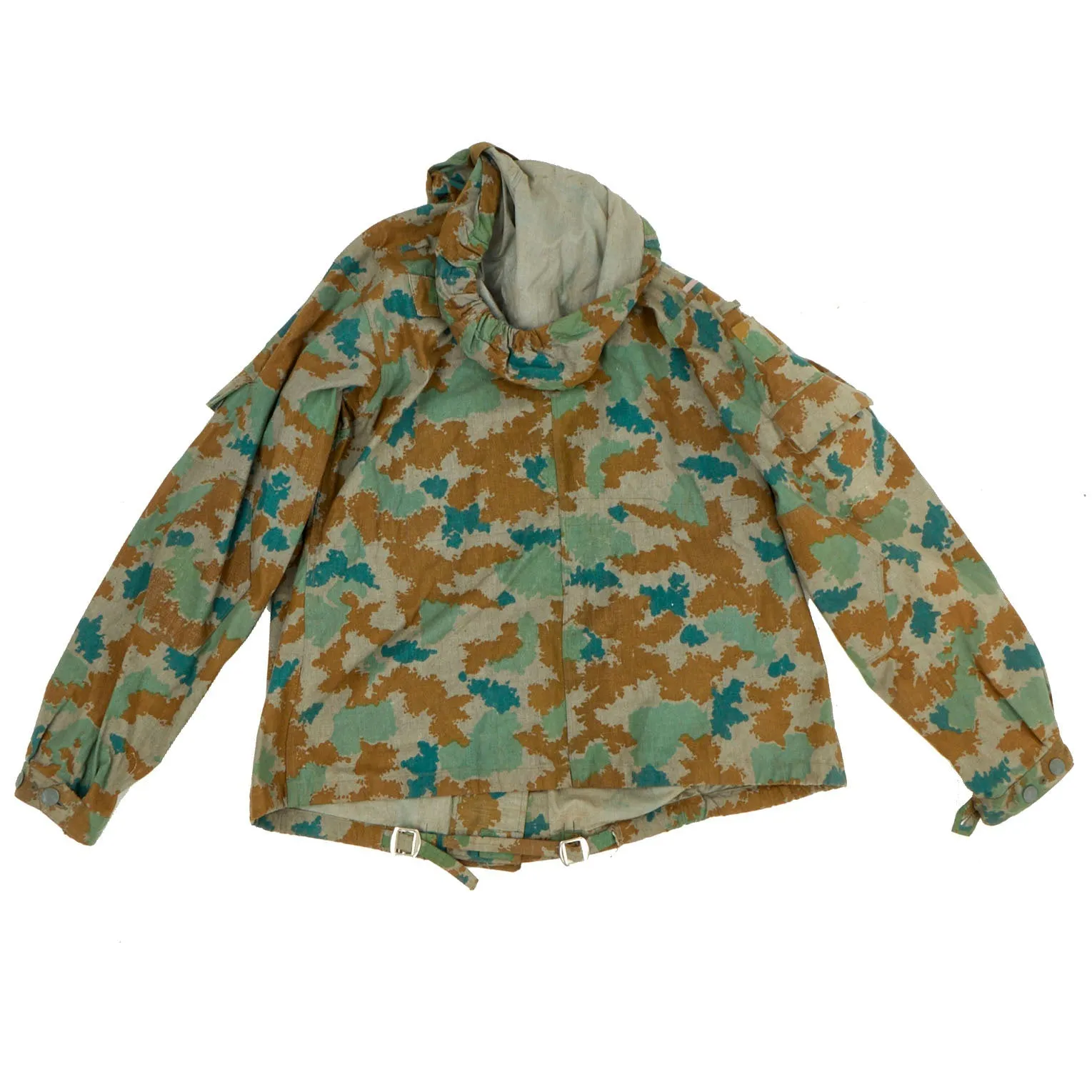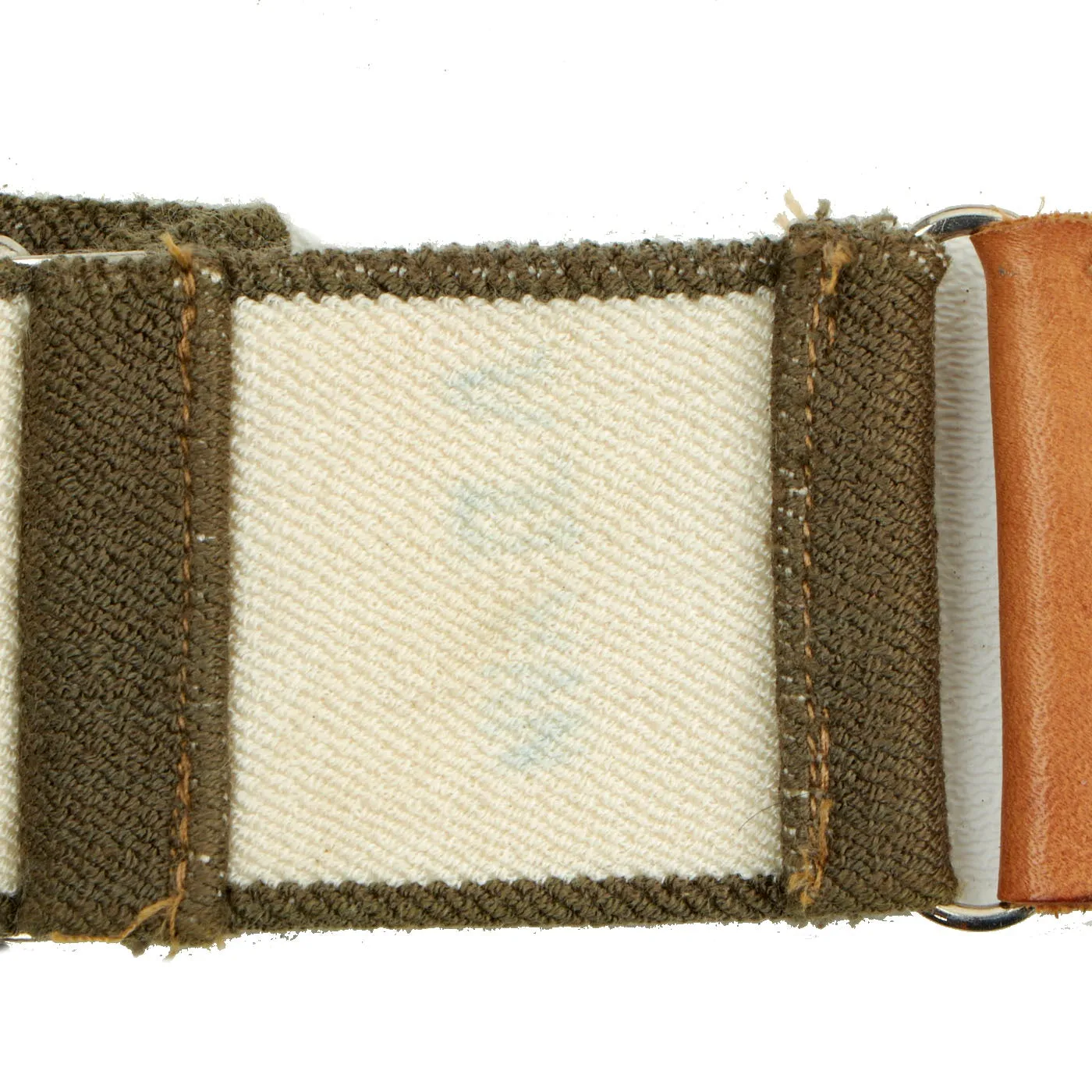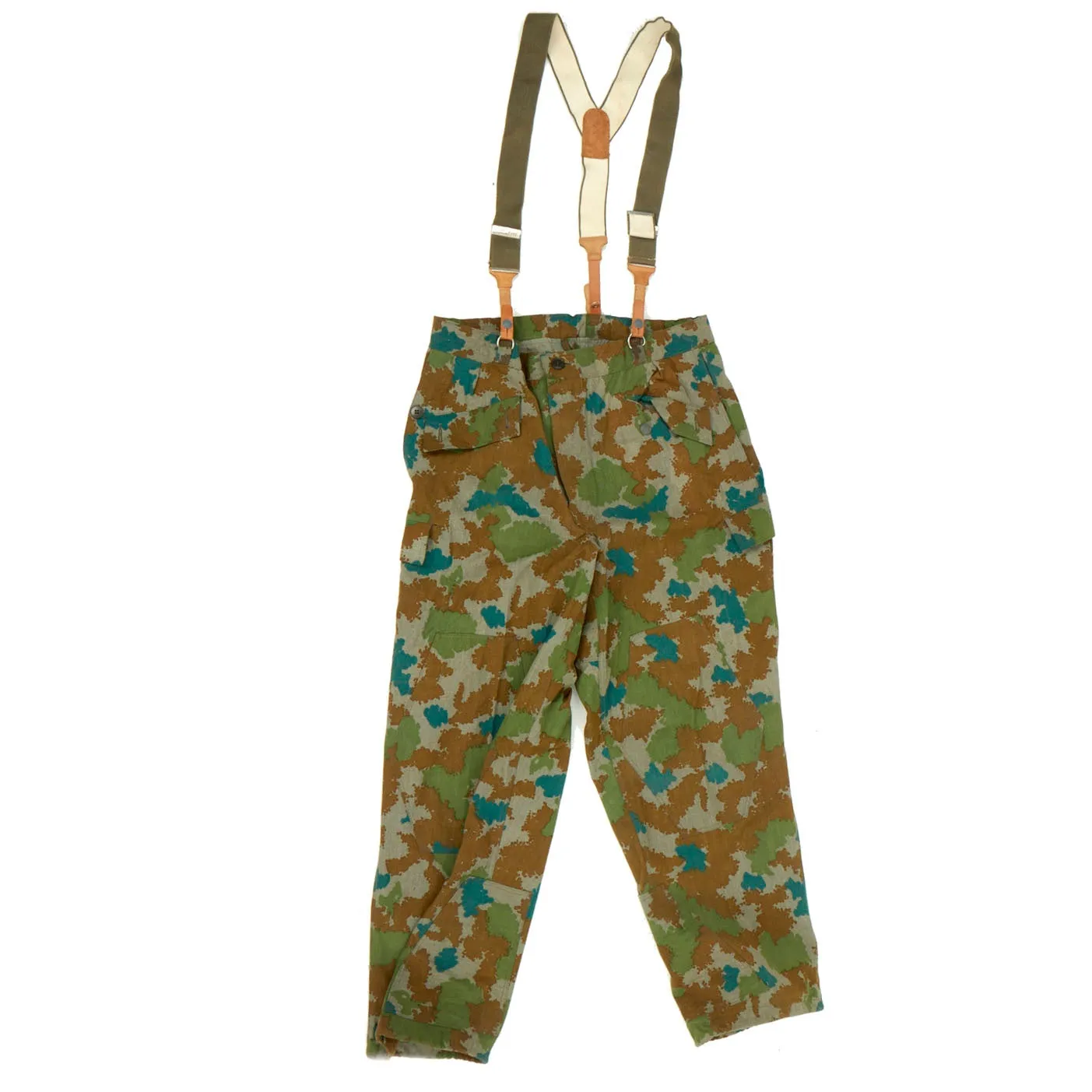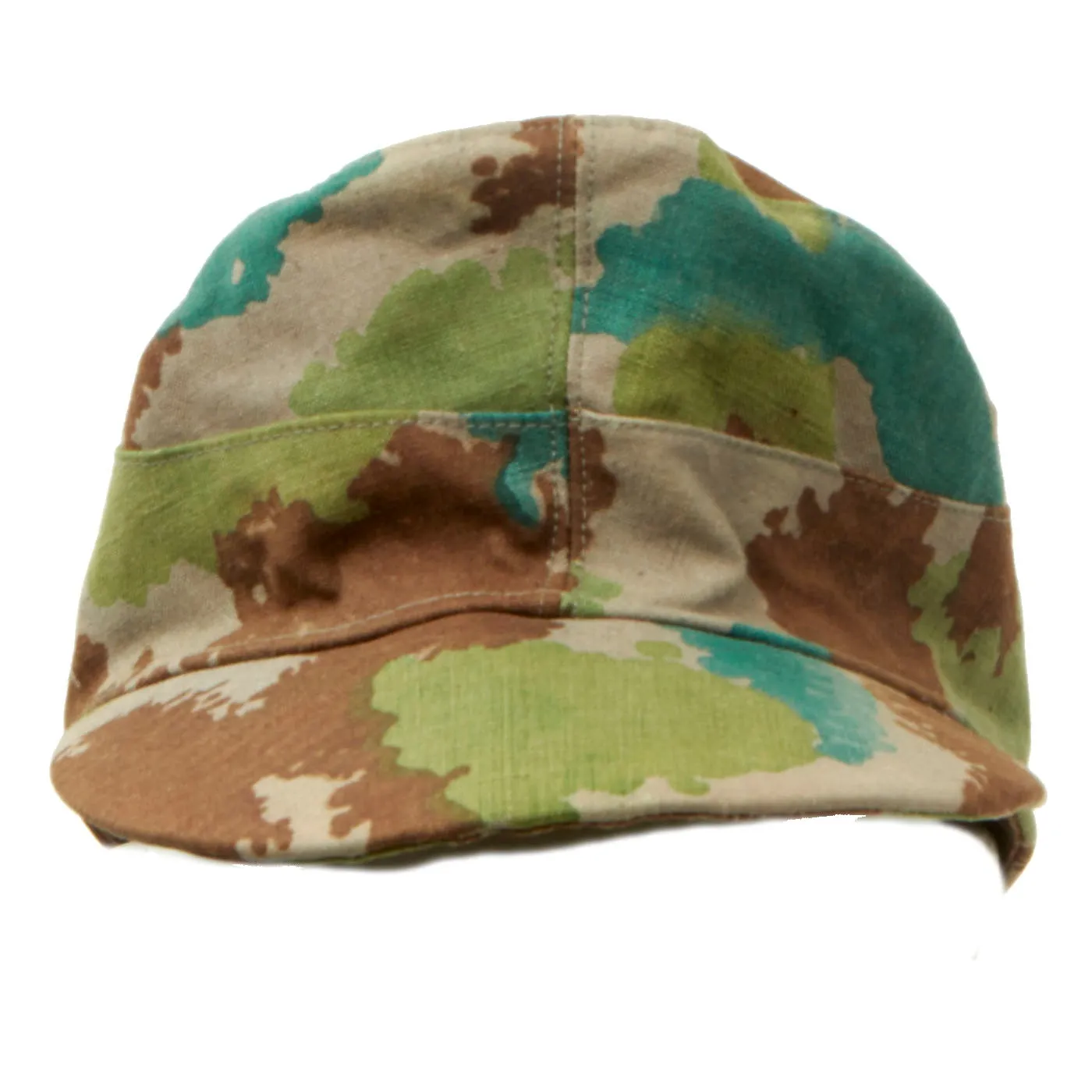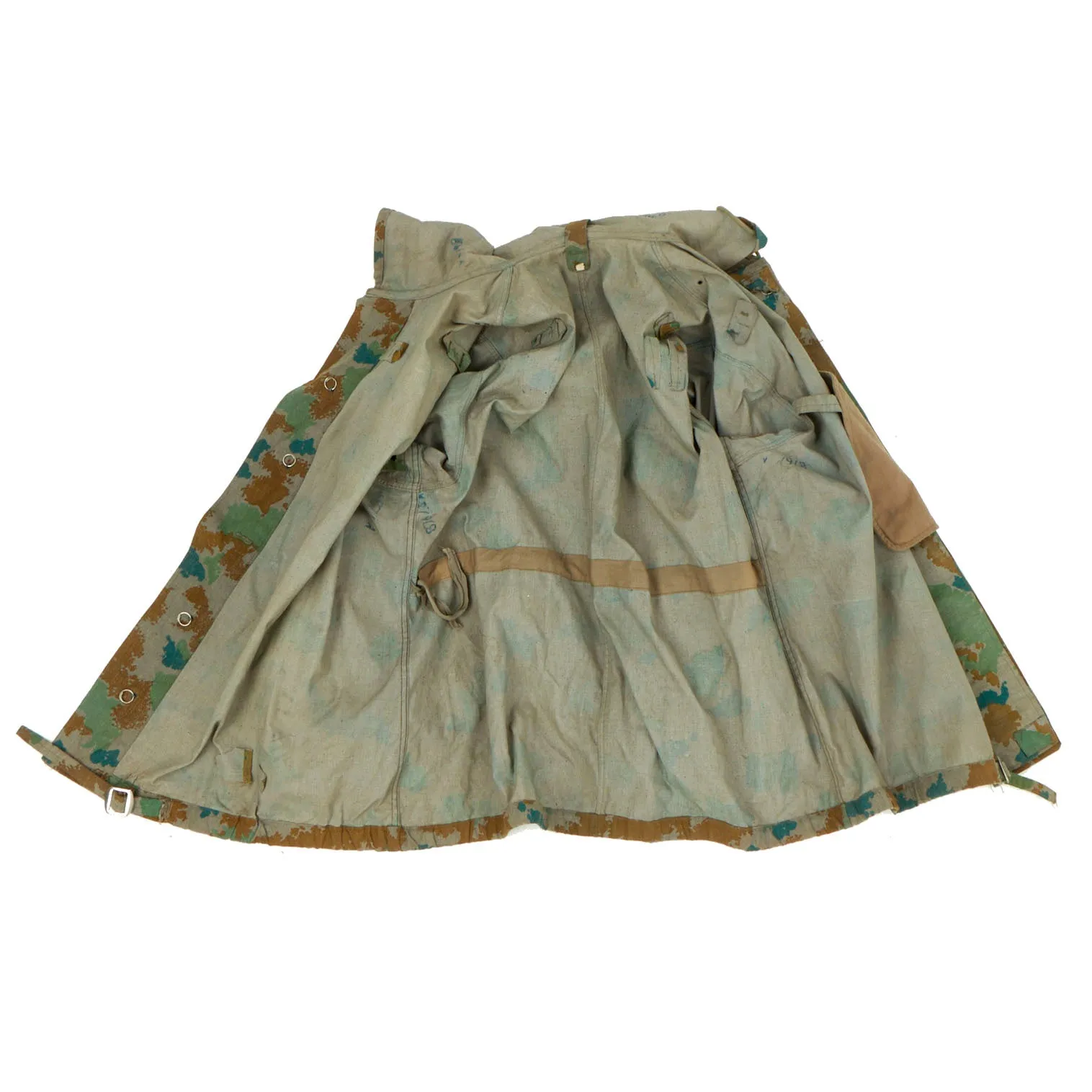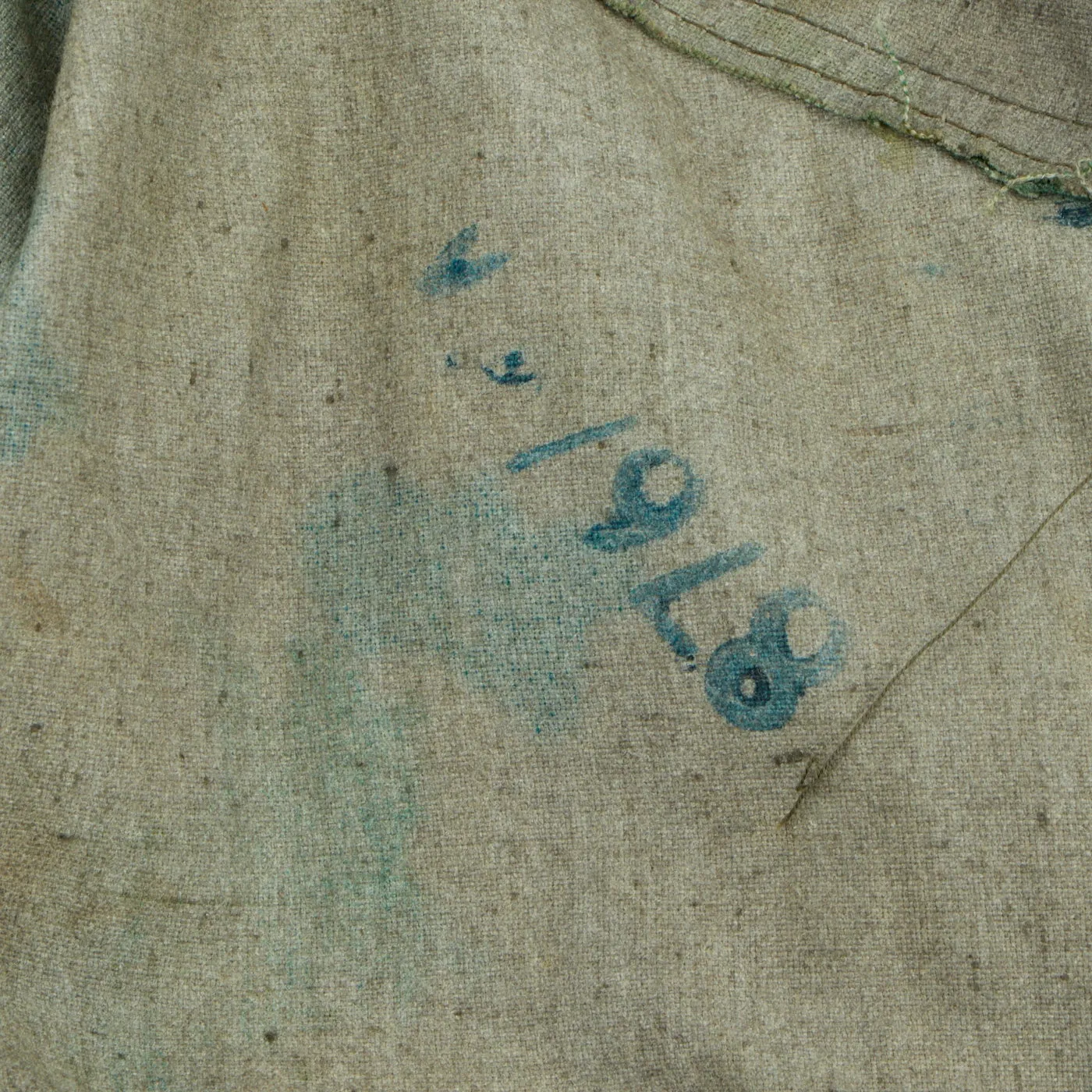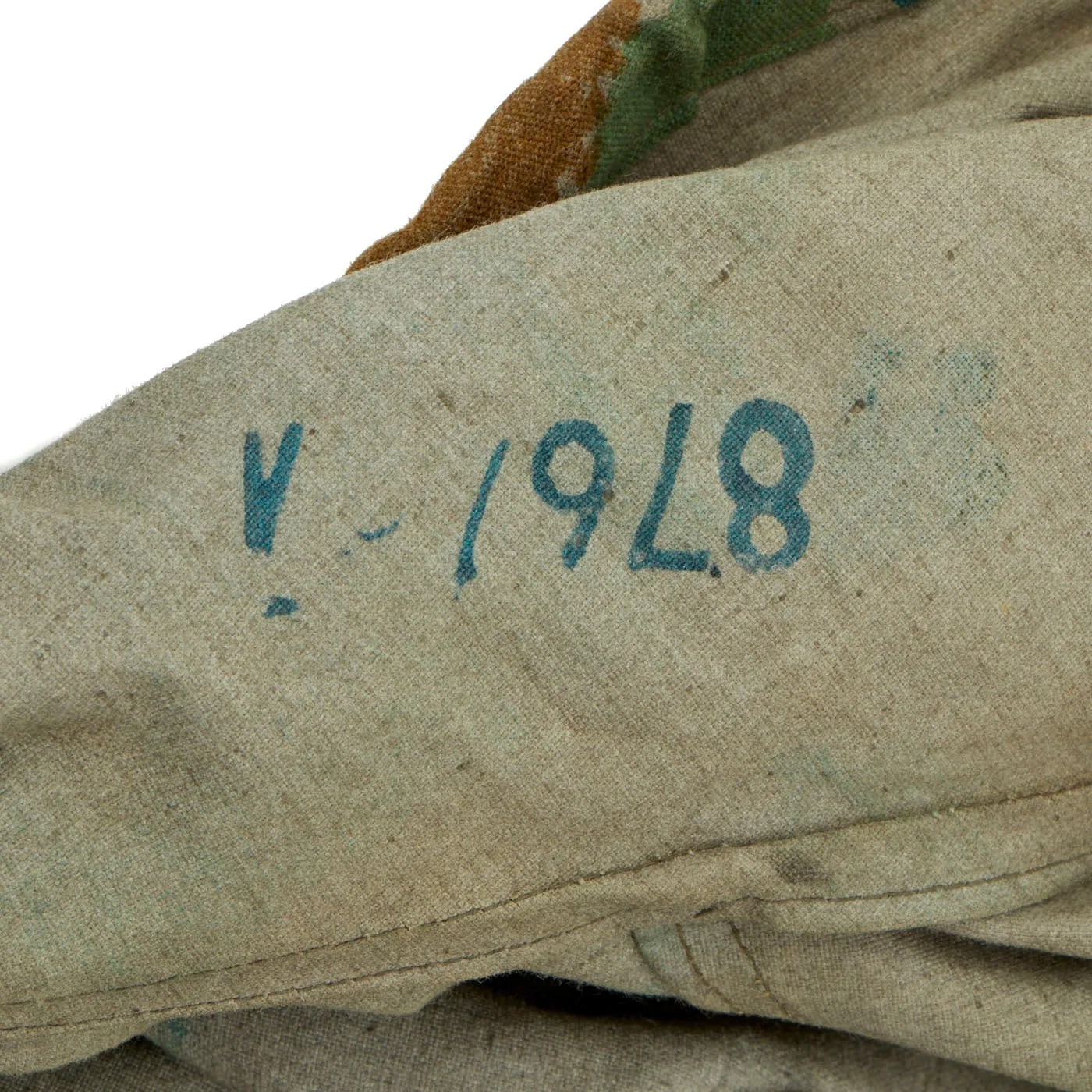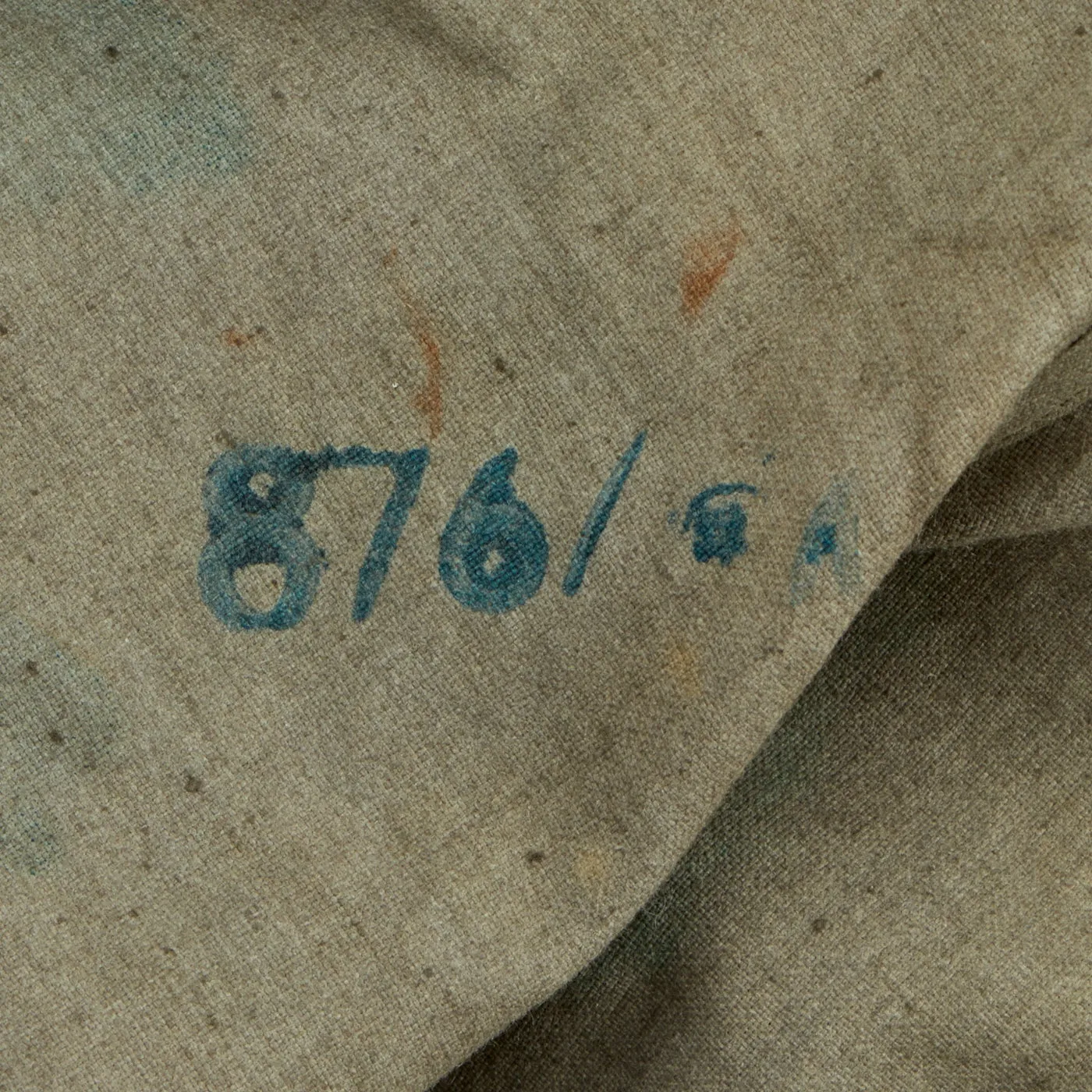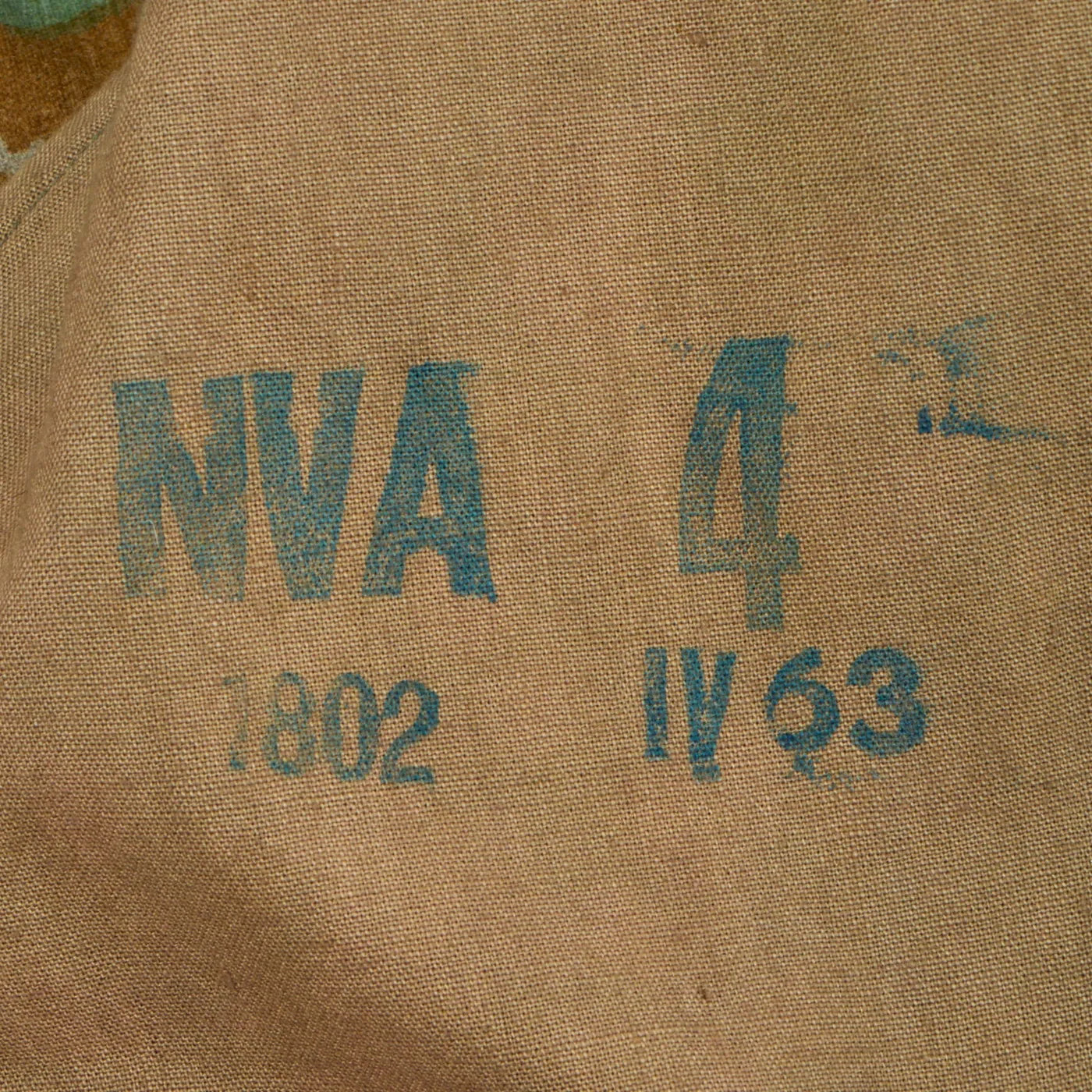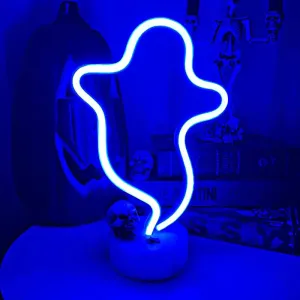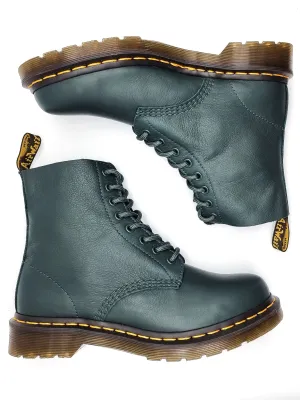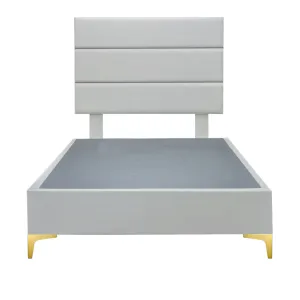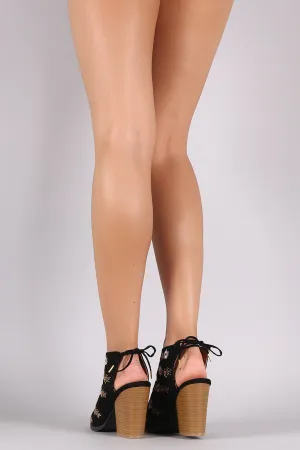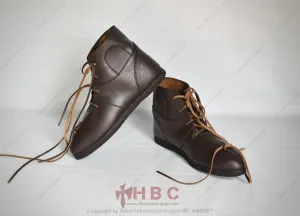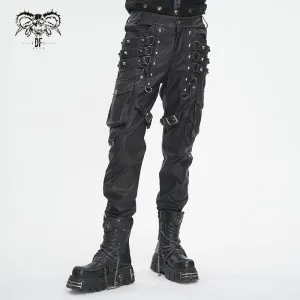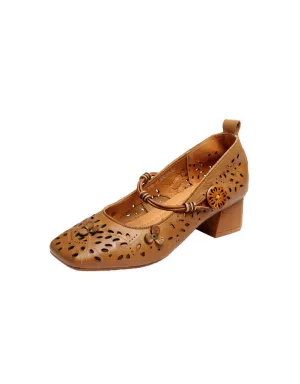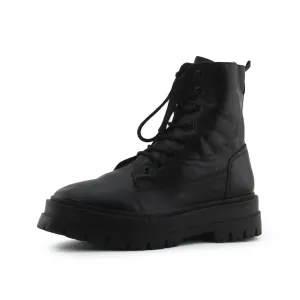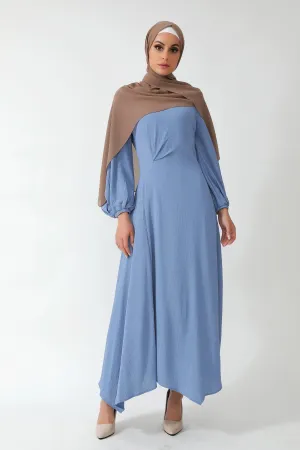Original Items: Only Ones Available. One of the most sought after patterns amongst camouflage collectors is the early DDR East German Blumentarn. This is quite possibly the finest set we have ever located, and in a large size!
This unissued condition set of Blumentarn is in excellent condition. There are no holes, tears or stains on any piece of this grouping. All buttons are intact. The trousers even come with an issue set of suspenders. Jacket is dated 1963, and the Trousers 1962. Both Smock and Trousers are nicely marked. The cap is roughly a size 7 ⅛ and there are no markings that could be found. Smock (jacket) is marked size “4”, and the trousers size “3”.
The M58 Flächentarn pattern was issued between 1956 and 1967 to units in the East German Army (NVA) and Ministry of Interior (MDI). Also nicknamed “Kartoffelmuster” (potato camouflage) or “Blumentarn” (flower camouflage), the pattern generally consists of blue-green, olive green & brown ragged blotches on a field grey background. Several mild color variations have been documented, some of which may appear darker due to their having been coated in anti-gas chemicals (which also gave the fabric a waxy texture). Several types of jacket, trousers, field equipment, shelter half and hood/helmet cover were produced in this pattern.
These were a specialized item of issue originally. The camouflage combat suit was intended to be worn over the regulation service uniform. This two piece Blumentarn pattern camouflage suit was shown in the 1959-1960 uniform regulations along with the rain cape. This "splotch" or so called "potato" pattern combat suit was worn over the service uniform with a grey web belt and Y straps for the matching Blumentarn camouflage assault pack system. The jacket had a large attached camo pattern hood and various loops in which foliage could be placed. This 1st pattern of camouflage combat suit had no provision for shoulder boards as rank insignia was envisioned as being a series of cloth bars sewn onto the left sleeve. Later versions of this combat suit did have provisions for wearing shoulder boards to indicate rank. The matching loose camouflage trousers were worn over the top of the boots.
The early Blumentarn combat suit was worn by Grenzpolizei and there were several refinements and variations that will be found such as the shape and placement of foliage loops, button types, hood variations, and method of showing rank to name a few. Later Grenztruppen troops also wore and tested the second pattern of camouflage called Strichtarn or rain pattern that was also called the "one-stripe-no-stripe-suit" by soldiers. This Strichtarn rain pattern combat suit was finally adopted as the "DV-10/5. edition 1965" field service outfit. Interestingly, the Blumentarn pattern suit continued to be manufactured and issued until the late 1960s.
A very rare, and desirable, set of camouflage on today’s market… especially in this condition and size!





